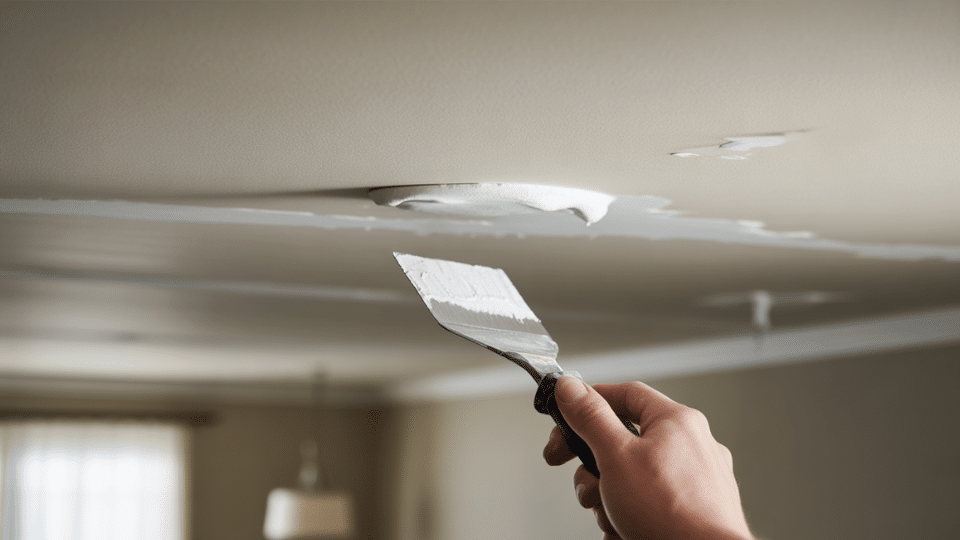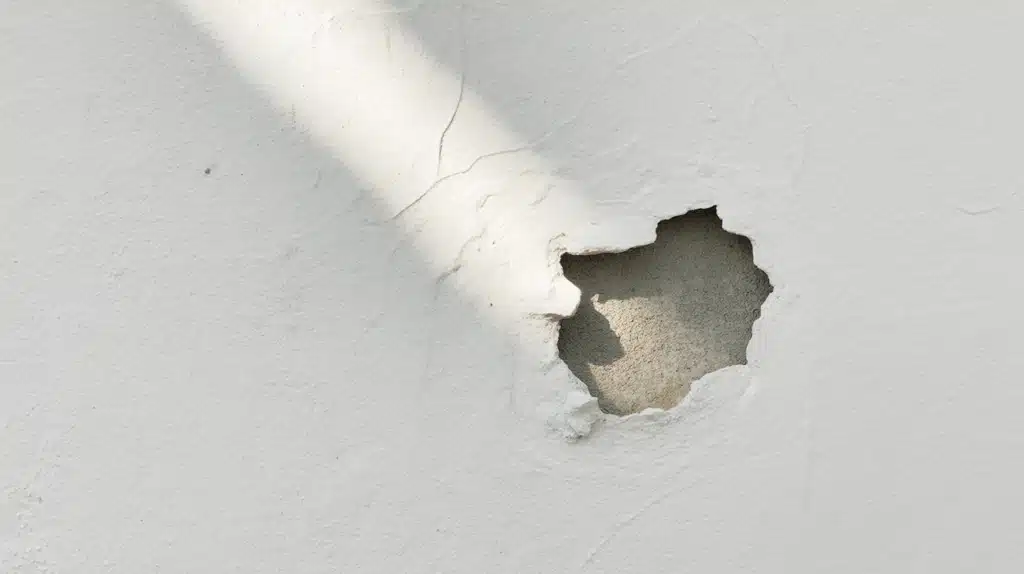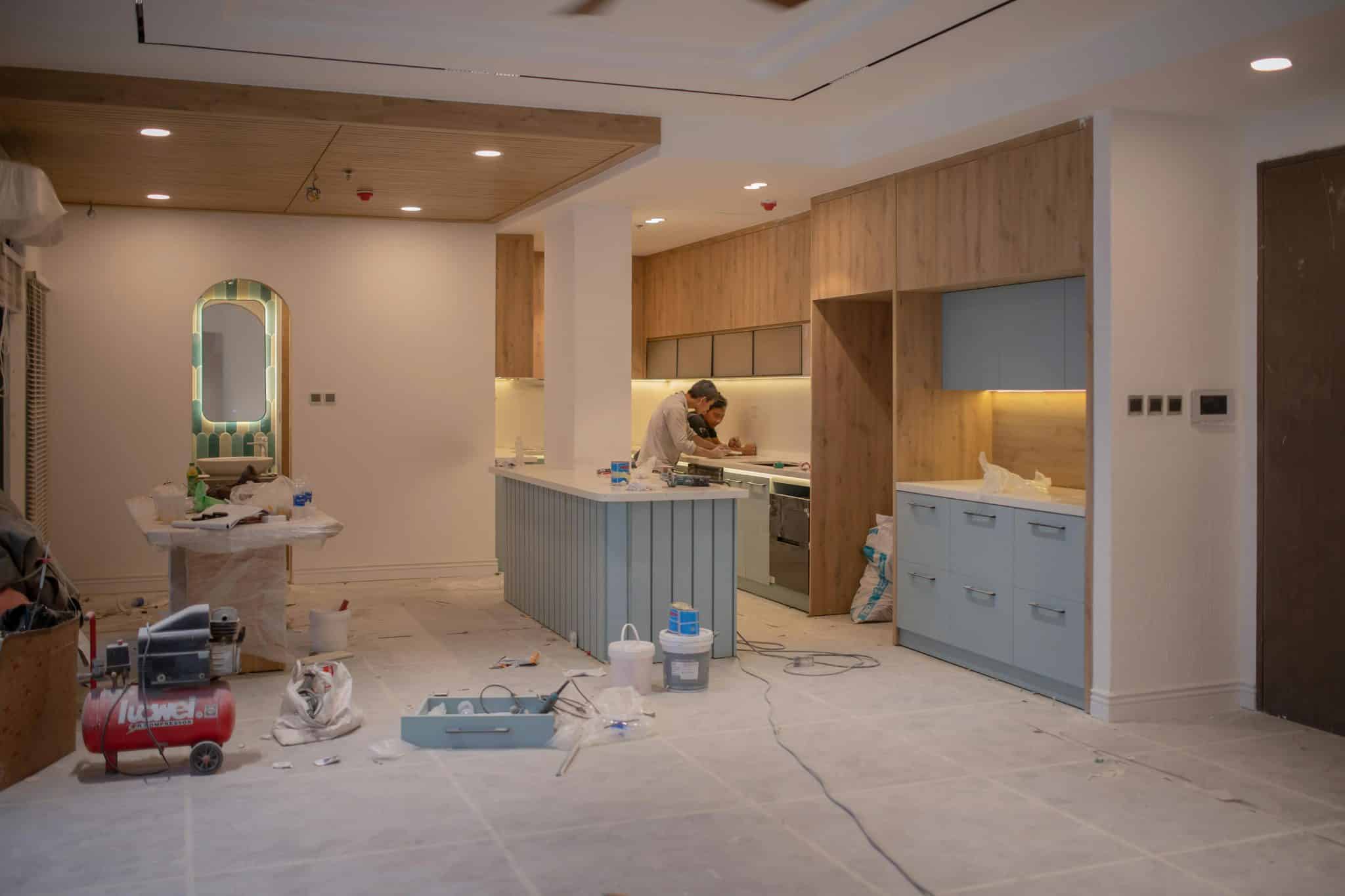Have you noticed small bumps or raised circles appearing on your ceiling? You’re not alone. These annoying spots, known as nail pops, often occur in most homes.
While they may look concerning, the big question homeowners ask is: Are these just cosmetic problems, or could they signal something more serious?
Most nail pops are harmless and result from normal house settling. However, multiple nail pops, especially when paired with cracks, stains, or ceiling sagging, can indicate serious structural issues needing immediate attention.
In this guide, you’ll learn what nail pops are, what causes them, how to spot dangerous warning signs, and when you can fix them yourself versus calling professionals.
You’ll know whether nail pops are cosmetic annoyances or serious.
What Are Nail Pops?
Nail pops are small bumps or raised circles that appear on your drywall surface when the nails or screws holding the drywall pull away from the wall studs or ceiling joists.
You’ll notice these unsightly bumps most often on ceilings, along walls, and in corners where two surfaces meet.
The nail head pushes through the joint compound and paint, creating a visible round or oval-shaped protrusion that feels raised when you run your hand over it.
While drywall nail pops can be concerning, they’re extremely common in homes and typically appear as single spots or small clusters on your ceiling, with nails popping out from behind the surface.
Common Causes of Nail Pops
- House settling and seasonal expansion/contraction: Your home naturally shifts and moves as it ages, causing the wood framing to expand and contract with temperature changes, which pushes nails out of their original position.
- Improper drywall installation (use of nails instead of screws): When builders use nails instead of screws during installation, the smooth nail shank can easily back out of the wood over time.
- Roof truss uplift or shifting structural components: Changes in attic temperature and humidity cause roof trusses to lift slightly, pulling the ceiling drywall away from the nails.
- Humidity and temperature fluctuations: High moisture levels and temperature swings make wood framing swell and shrink repeatedly, loosening the nails that secure your drywall.
- Water damage or attic moisture: Leaks from roofs, plumbing, or condensation soften the drywall and wood, reducing the nail’s grip and causing it to pop through the surface.
Are Nail Pops Dangerous?
Most nail pops are harmless cosmetic issues, but some can signal serious problems. Here’s how to tell the difference:
Usually Not Dangerous
- Single or isolated nail pops that appear alone are typically a result of normal house settling and pose no safety risk. These one-off bumps are the most common type of homeowners encounter.
- No cracking, sagging, or staining around the pop means the drywall is still structurally sound and secure. The surface remains smooth and intact, except for a small, raised bump.
- Newly constructed or recently renovated homes often develop nail pops as materials settle, a common occurrence. Builders expect this, and it’s a natural part of the settling process.
- A stable ceiling structure that feels firm and doesn’t bounce when you walk upstairs indicates no structural concerns. The ceiling should feel solid when you gently push on it.
Possibly Dangerous
- Multiple or recurring nail pops in the same area suggest ongoing movement that could indicate structural problems. Clusters of nail pops often mean something is shifting behind the drywall.
- Nail pops paired with drywall cracks or seams opening indicate that the ceiling is under stress and requires professional inspection. The combination of both issues suggests a significant shift.
- Discoloration or water stains near the pop point to leaks that can weaken your ceiling’s support structure. Moisture damage exacerbates the problem significantly more than cosmetic nail pops.
- Ceiling sagging, bowing, or feeling soft means the drywall may be losing its attachment to the framing above. Any give or flex in the ceiling indicates potential failure.
- Nail pops reappearing after repair indicate continued movement behind the drywall that needs addressing. If fixes don’t hold, the root cause remains active.
- Pest or termite damage behind the walls or ceilings can compromise the wood framing that supports your drywall. Insects can weaken the structure that supports your ceiling.
- Structural shifting from foundation issues or roof truss uplift creates ongoing stress that repeatedly pushes nails out. Foundation problems affect the entire house frame.
Dangerous Warning Signs to Watch For
- The sudden appearance of many nail pops across large areas can signal significant structural movement. When multiple pops appear quickly, it indicates rapid changes in your home’s structure.
- Doors or windows that stick, along with nail pops, often mean that foundation settlement is affecting your entire home. Frame distortion shows the house is moving significantly.
- Gaps forming between the ceiling and molding show the ceiling is pulling away from the walls. Visible separation indicates the ceiling is no longer properly attached.
- Cracks forming in ceilings near wall corners, combined with nail pops, indicate severe structural stress. Corner cracks are red flags for major structural problems.
How to Fix Nail Pops: Step-by-Step Process

Learn how to repair nail pops in your ceiling or walls with this straightforward, step-by-step guide. From tools to techniques, we’ll walk you through the entire process to restore a smooth, safe surface.
Tools Needed
| Tool | Purpose |
|---|---|
| Drywall screws (1¼ inch) | Secure drywall to framing |
| Electric drill/screwdriver | Drive screws into place |
| Spackle or joint compound | Fill holes and smooth the surface |
| Putty knife (4-6 inches) | Apply and spread spackle |
| Fine-grit sandpaper (120-220) | Smooth dried spackle |
| Primer and matching paint | Cover the repaired area |
| Drop cloth | Protect the floor from debris |
Step 1: Secure the Loose Nail
First, drive a drywall screw into the ceiling about 2 inches away from the nail pop. Make sure the screw goes into the ceiling joist or stud behind the drywall.
The screw head should sit just below the surface without breaking the paper. Then, gently tap the popped nail back into place with a hammer, creating a small dimple around the nail head.
Step 2: Apply Spackle
Using your putty knife, apply a thin layer of spackle over both the nail head and the new screw head. Spread the spackle slightly wider than the actual holes to create a smooth transition.
Apply light pressure and work in smooth strokes to avoid air bubbles. Let the first coat dry completely according to the manufacturer’s instructions.
Step 3: Sand and Repeat
Once the spackle is completely dry, lightly sand the area with fine-grit sandpaper until it feels smooth to the touch.
Wipe away dust with a clean cloth. Apply a second thin coat of spackle if needed, especially if you can still see the nail or screw heads. Sand again after the second coat dries.
Step 4: Prime and Paint
Apply a coat of primer to the repaired area to ensure the paint adheres properly and matches the existing ceiling color.
Once the primer dries, paint the spot with matching ceiling paint using a small brush or roller. You may need two coats of paint to blend the repair seamlessly with the surrounding ceiling.
When to Call a Professional?
Don’t attempt DIY repairs if nail pops return repeatedly after you have fixed them, as this indicates ongoing structural movement that requires expert assessment.
Contact a professional contractor or structural engineer if you notice multiple nail pops appearing together, ceiling sagging, water stains, or cracks forming around the pops.
When the ceiling exhibits signs of damage beyond simple cosmetic issues, a professional can identify underlying problems, such as roof truss uplift, foundation settlement, or moisture damage, that require specialized repairs.
Professional help is also necessary if you’re uncomfortable working on ceilings, lack the proper tools, or if the nail pops are in hard-to-reach areas that require scaffolding or special equipment.
Preventing Future Nail Pops
- Use of drywall screws vs. nails in new installations: Always use drywall screws instead of nails when installing or repairing drywall, as screws provide a better grip and won’t back out over time.
- Maintaining indoor humidity and temperature control: Keep your home’s humidity between 30-50% and maintain consistent temperatures to prevent wood framing from expanding and contracting.
- Regular roof and attic inspections: Check your roof and attic twice yearly for leaks, proper ventilation, and insulation issues that can cause moisture problems.
- Sealing leaks and improving insulation: Fix any water leaks immediately and add proper insulation to reduce temperature fluctuations that cause structural movement.
Summing It Up
Nail pops don’t have to be a mystery anymore. Most are harmless cosmetic issues from normal settling that you can fix yourself with basic tools.
The key is knowing when to worry. Single nail pops with no other symptoms are safe DIY projects.
However, multiple pops paired with cracks, stains, or sagging indicate serious structural problems that require professional help immediately.
Remember the warning signs: widespread popping, water damage, ceiling movement, or foundation issues. These require urgent attention from a structural engineer.
Don’t ignore what your ceiling is telling you. A few harmless nail pops are regular, but patterns of damage signal bigger problems that could affect your safety.
Ready to take action? Inspect your ceiling using the checklist from this guide.
What will you check first in your home?
Frequently Asked Questions
When to Be Concerned About Nail Pops?
Be concerned when you see multiple nail pops appearing together, especially with cracks, water stains, or ceiling sagging.
How Many Nail Pops Are Normal?
A few scattered nail pops throughout your home are entirely normal, but clusters of 5 or more in one area need attention.
Do Nail Pops Mean Foundation Problems?
Nail pops alone don’t indicate foundation issues, but when paired with sticking doors, wall cracks, or gaps in molding, they can signal foundation settlement.
Are Nail Pops Normal in Older Homes?
Yes, nail pops are very common in older homes due to decades of settling, temperature changes, and the use of nails instead of screws in original construction.









